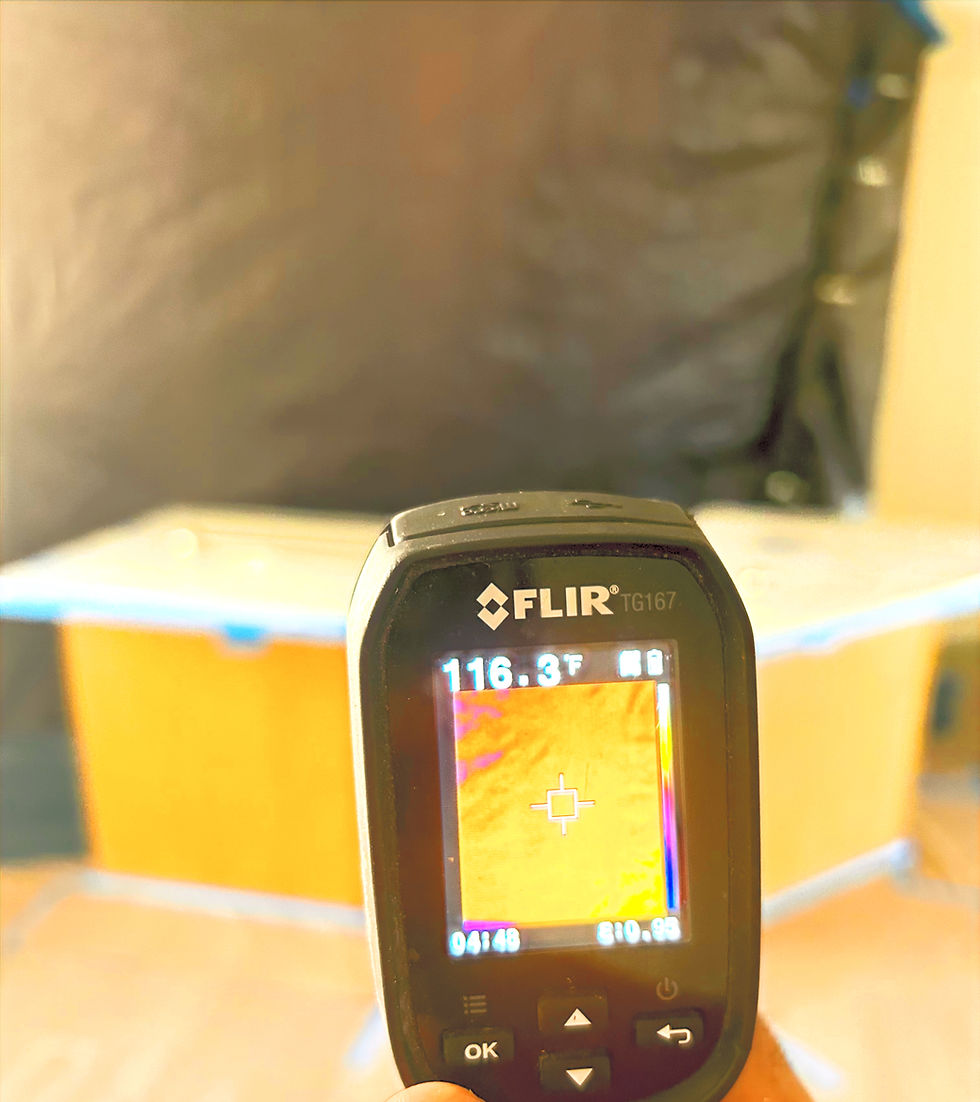Exploring the Mechanism of Heat Treatment in Bed Bug Elimination
- Absolute Pest Control Hawaii PCO#1409
- Aug 2
- 4 min read
Bed bugs have become a common nuisance in households around the world. With their ability to hide in tiny crevices and reproduce rapidly, they can quickly transform a peaceful home into a battleground. While various methods exist for combating these unwanted pests, heat treatment has emerged as one of the most effective solutions. This blog post explores the mechanisms behind heat treatment for bed bug elimination, providing insights into how this process works, its effectiveness, and what one might expect when opting for this method.
Understanding Bed Bugs
Before delving into the specifics of heat treatment, it's essential to understand the enemy: bed bugs. These small, reddish-brown insects feed on the blood of humans and animals, primarily at night. They are adept at hiding in tight spaces, such as mattress seams, furniture joints, and even electronic devices, making them hard to detect.
Their life cycle includes several stages—eggs, nymphs, and adults—each of which can survive various environmental conditions. This resilience often complicates eradication efforts, making effective pest control methods vital.
What is Heat Treatment?
Heat treatment, also known as thermal remediation, is an innovative method that uses elevated temperatures to eliminate bed bugs in all their life stages. This approach involves heating an area to temperatures between 120°F (49°C) and 140°F (60°C) for an extended period—usually around 90 minutes to several hours.
The process works because bed bugs cannot survive at high temperatures. When exposed to heat above a certain threshold, their bodily functions are disrupted, leading to dehydration and, ultimately, death.
The Science Behind Heat Treatment
The principle behind using heat to eradicate bed bugs is quite straightforward. Bed bugs, like many other insects, are ectothermic, which means they rely on external sources to regulate their body temperature.
When the environment around them is heated to lethal levels, their physiological processes cannot cope, leading to cell failure, dehydration, and death. The heat treatment process is designed to ensure that the temperature penetrates various materials where bed bugs may be hiding, including carpets, bedding, and even furniture.
The Process of Heat Treatment
Preparation: Prior to the heat treatment, it is crucial to prepare the area. This involves removing items that could obstruct the heat flow, such as electronics, plants, and certain flammable materials.
Heating Equipment Setup: Specialized equipment is then set up, which typically includes a series of heaters and fans designed to circulate hot air throughout the space.
Heating Phase: The heating process begins, with temperatures gradually rising. This stage requires monitoring to ensure that all areas reach the necessary temperature threshold.
Cooling Down: Once the target temperature has been maintained for the required period, the space is slowly cooled down.
Inspection: After cooling, a thorough inspection is conducted to ensure all pests have been effectively eliminated.

Benefits of Heat Treatment
Heat treatment offers several advantages over traditional pest control methods. Here are some key benefits:
Chemical-Free: One of the main appeals of heat treatment is its non-chemical nature. This makes it an attractive option for households with children and pets, as there are no harmful residues left behind.
Effective Against All Life Stages: Heat treatment is effective in killing bed bugs at all stages of their life cycle—eggs, nymphs, and adults—ensuring comprehensive eradication.
Speed: The entire process can be completed in just a few hours, significantly reducing the time and disruption associated with traditional pest control methods.
Considerations and Drawbacks
While heat treatment has proven effective, there are some considerations and potential drawbacks to keep in mind:
Cost: Depending on the size of the infestation and the area to be treated, heat treatment can be more expensive than other methods.
Property Damage Risk: Some materials may be sensitive to high temperatures. It's essential to consult with professionals to identify any items that may be damaged during the process.
Requires Professional Help: Effective heat treatment typically requires professional pest control services, as improper handling can lead to incomplete treatment and further infestation.
Maintenance and Prevention Strategies
After undergoing heat treatment, taking steps to prevent future infestations is crucial. Here are a few strategies to consider:
Regular Inspections: Conduct frequent checks of furniture and bedding for signs of bed bugs, such as spotting or shedding skin.
Declutter: Reducing clutter in and around your home can eliminate hiding spots for bed bugs.
Protective Covers: Consider using bed bug-proof encasements for mattresses and box springs to provide an additional layer of defense against re-infestation.
Educate Yourself: Awareness of how bed bugs are transported and their behavior can help in avoiding future problems.
Conclusion
Heat treatment has become a vital tool in the fight against bed bugs. With its chemical-free approach, efficiency, and ability to target all life stages of these resilient pests, it represents an effective solution for those facing an infestation. However, it is essential to weigh the cost and ensure the treatment is performed professionally to achieve optimal results. As with any pest control strategy, maintaining awareness and employing preventive measures can go a long way in keeping your home bug-free.
Whether you are dealing with a current infestation or wish to be proactive, understanding and implementing heat treatment can be a significant step toward regaining your comfort and peace of mind.













Comments